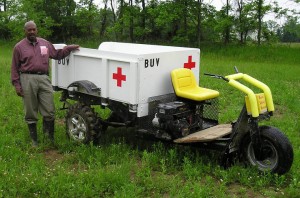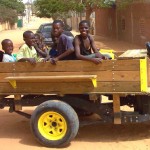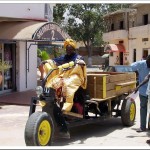One of the main concerns we had in desiging and building the BUVs is maintenance. We have mentioned before that the Basic Utility Vehicle (BUV) is extremely durable with brakes and is simple with having a three input system (go, stop, and steer) but what about repairs?
Our overriding vision with the BUV is to build vehicles that are simple and durable. So in the even that something breaks, even the repairs themselves have to be simple.
For one thing, we wanted the BUV to have a bed that could be easily replaced. Since 2007, the BUVs built here in the United States have had wooden beds. Yes, it does receive a lot of wear and tear, but wood is also easy to find, easy to source, and easy to install. If a BUV driver lives in an area with all the materials around them, it’s easy to replace.
This does not mean that some sites don’t use a metal bed. BUV Tanzania uses metal beds in their design because the material is also easy to come by in their area, and there is a press brake in town.
When deciding the best way to build BUVs, we have to look at the things that are easier for the owners, not just easier for use. We design our units for what the owners will have to face if and when they repair their units. For countries in Africa where they have easy access to wood, then wood can be a good choice. For other countries, steel is the preferred material. It comes down to the owner or manufacturer as to which material is used in the BUV.


